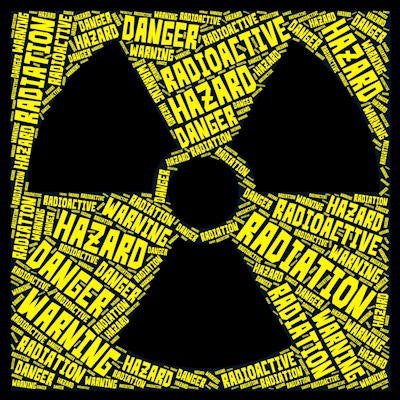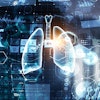
Researchers in Madrid have reported significant progress in developing a coherent strategy to optimize radiation dose. Establishing a multidisciplinary dose optimization panel has been a vital part of their drive to improve CT protocols.
The committee comprises radiographers, radiologists, and medical physicists, according to Paula Garcia Castañon and colleagues from the Medical Physics and Radiation Protection Department at University Hospital La Princesa. Dose optimization is an iterative process involving the adaptation of parameters and evaluating the impact on dose reduction and image quality, they emphasize.
"In our case, the use of indication-based diagnostic reference levels (DRLs) has proved to be more useful than description-based DRLs," the authors noted in an e-poster presentation at EuroSafe 2023. "Further indications have to be identified in order to implement more DRLs and continue the process of optimization. A dose committee is a mandatory tool to achieve this objective because everyone involved in a diagnostic procedure should work together towards the patient safety."
Problem solving
Establishing DRLs and comparing them with local ones constitutes the main tool for optimization of radiation doses, but this is always a difficult task in CT due to the huge variety of protocols, they explained.
Traditionally, DRLs for CT were established for study descriptions such as chest CT or abdominal CT, but there are substantial differences between centers -- and even units -- within a description. "Each facility has many different protocols for each description, with different number of series and scan lengths, so the comparison is not always easy or coherent. Hence, this method may not detect protocols that need optimization."
The European Commission has promoted and funded an optimization project, EUCLID, which stands for "European clinical DRLs" and is organized by the European Society of Radiology (ESR). This project has tried to solve that problem by defining European DRLs based on the clinical indication rather than the study description.
The Madrid team has conducted a study to apply the EUCLID DRLs as a tool to optimize the CT protocols and patient doses in two newly installed Revolution EVO CT systems from GE Healthcare. The protocols in use were initially proposed by the manufacturer and adapted by the radiologists to suit their needs and preferences.
DRLs in EUCLID are established for mean CT dose index-volume (CTDIvol, mGy) and dose length product (DLP, mGy*cm). These quantities are indicated by the CT units and annually validated within the quality assurance program, and the maximum allowed difference according to Spanish protocol between measured and indicated value is 10%, according to Garcia Castañon and colleagues.
The dose online management system available, GE's DoseWatch, was used to extract the CTDIvol from each series and the DLP for each study. For each clinical indication, median values of both quantities were then calculated and compared to the EUCLID DRLs. Outlier values were searched for and extracted for each sample.
| Clinical indication | Number of scans | Number of outliers |
| Stroke (detection or exclusion of hemorrhage) | 7,965 | 372 |
| Chronic sinusitis (detection or exclusion of polyps) | 261 | 16 |
| Cervical trauma (detection or exclusion of a lesion) | 105 | 0 |
| Pulmonary embolism (detection or exclusion) | 166 | 12 |
| Coronary calcium scoring (risk stratification) | 201 | 0 |
| Coronary angiography (vessel assessment) | 106 | 1 |
| Lung cancer (oncological staging first and follow-up) | 1,129 | 0 |
| Hepatocellular carcinoma (oncological staging) | 143 | 0 |
| Colic/abdominal pain (detection or exclusion of a stone) | 131 | 10 |
| Appendicitis (detection or exclusion) | 1,769 | 114 |
To optimize doses in a Revolution EVO CT machine, the process involves changing the "noise index", which is a parameter related to the accepted noise in the images and therefore the radiation dose delivered to the patient, the authors stated.
"For each protocol, GE recommends a noise index level, but it can easily be changed," they pointed out. "Depending on the slice thickness selected and anatomical thickness of the area to be irradiated, the noise index should be different."
For example, the noise index recommended for head protocols with 2.5 mm slice thickness is 3.8, while the noise index for this thickness in an abdomen protocol is 15.8. GE stipulates that when the noise index is increased by 5%, the mA value is decreased by the automatic exposure control by 10%. To optimize the protocols, the noise index must be changed according to necessity, and the pitch or slice thickness can be reviewed.
"Four out of 10 indications presented a median DLP value above the corresponding EUCLID DRLs and have led to a revision of the protocol parameters: chronic sinusitis, coronary angiography, hepatocellular carcinoma staging, and oncological staging of lung cancer," the authors wrote.
| Clinical indication | DLP DRL | Median DLP (mGy*cm) |
| Stroke | 1,386 | 923 |
| Chronic sinusitis | 211 | 728 |
| Pulmonary embolism | 364 | 260 |
| Calcium score | 82 | 49 |
| Coronary angiography | 459 | 548 |
| Hepatocellular carcinoma staging | 1,273 | 1,402 |
| Lung cancer staging | 628 | 1,050 |
| Cervical spine trauma | 495 | 440 |
| Abdominal pain (stones) | 480 | 342 |
| Appendicitis | 874 | 698 |
Doses from chronic sinusitis and oncological staging have been optimized by increasing the noise index, which was fixed for those protocols over the GE recommendations, they continued. For chronic sinusitis, this increase in the noise index changed from 3.8 to 9.6. This index of 9.6 corresponds to neck protocols, and it was chosen because imaging needs for a sinus CT is not comparable to a brain CT, they explained.
Median dose fell from 730 mGy*cm to 139 mGy*cm (82% reduction) and is now below the EUCLID DRL. The radiologists state that image quality remains adequate, according to a clinical evaluation.
For oncological staging of lung cancer, the variation in the noise index has been less drastic. The abdominal series has not been modified, with noise index already at the suggested value of 15.86, but for the thoracic series, it has been raised from 12 to 15.86, a value also recommended for chest protocols.
The overall dose reduction was about 19%, yielding a median value of 850 mGy*cm, which is still above the EUCLID DRL. A further optimization is currently being developed, based on other parameters like level of iteration or kV. The radiologists also consider image quality to be optimal.
"Since the abdominal series is at the recommended noise index, the optimization of hepatocellular carcinoma requires further investigation. We are working on the effect of slice width and other parameters such as the number of series performed within a protocol," the researchers noted. "For coronary angiography, doses have not been yet optimized because it involves some extra complexity, and it will be performed throughout this year."
To view the entire e-poster, go to the EPOS section of the ESR website. The co-authors of the exhibit were Isabel Salmerón Béliz, Guillermo Paradela Díaz, Rodrigo Rosado del Castillo, Pablo Chamorro, Sergio Honorato Hernandez, and Carlos Prieto Martin.



















